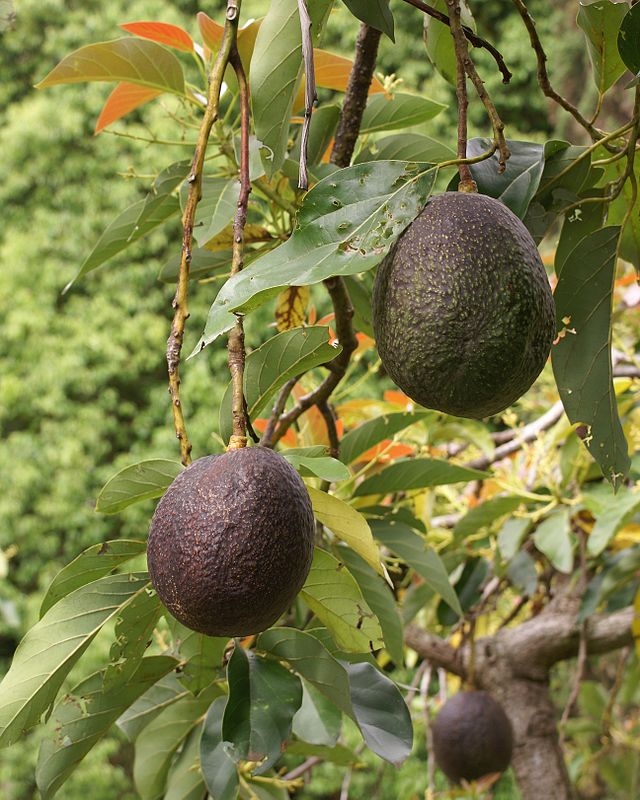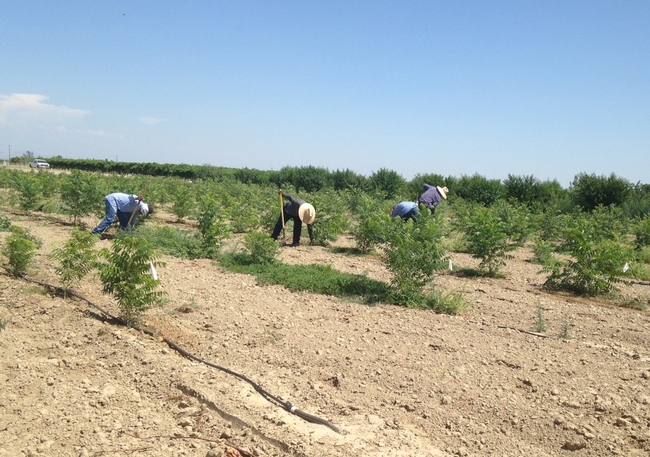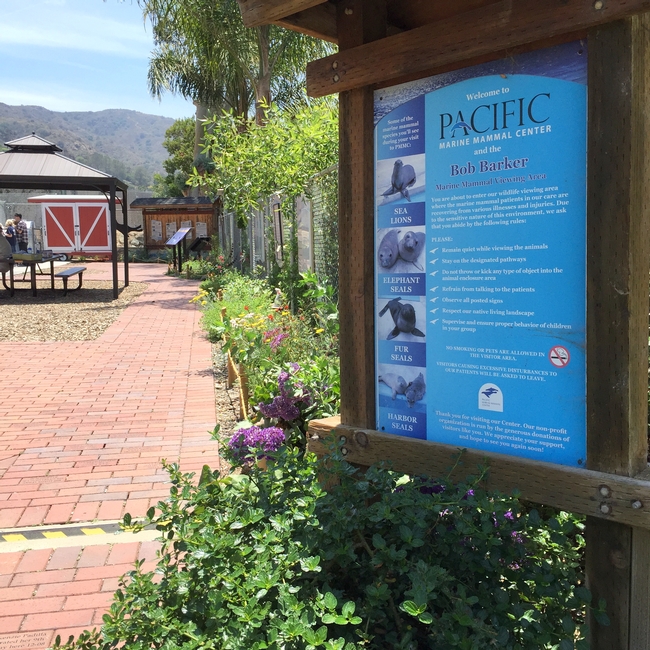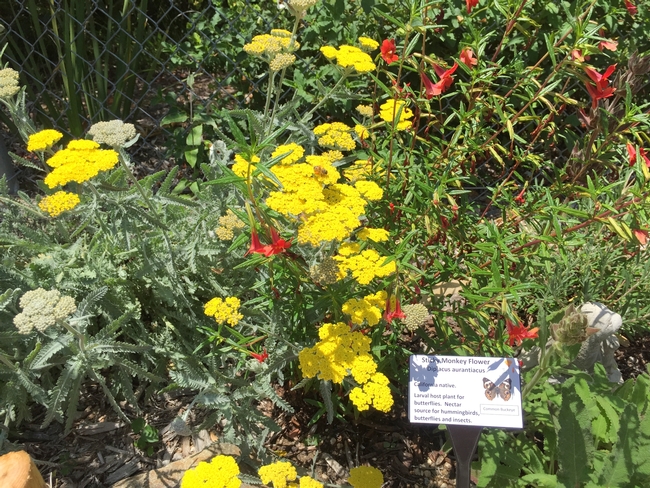From the UC Blogosphere...
Smell Like a Bee
Newly published research by a Michigan State University-led team indicates that one of the reasons why the varroa mite is so...
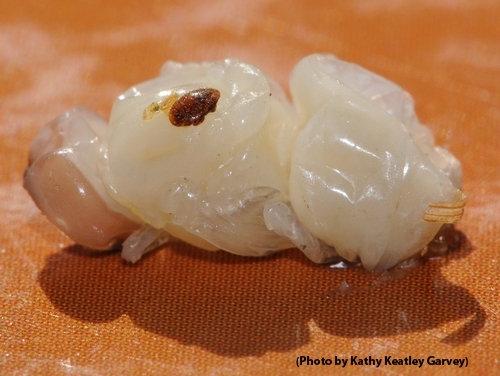
Questions about the Varroa mite (Varroa destructor), enemies of honey bees, are often asked at the Linnaean Games. This varroa is on a drone pupa. (Photo by Kathy Keatley Garvey)Mite on drone pupa. (Photo by Kathy Keatley Garvey)
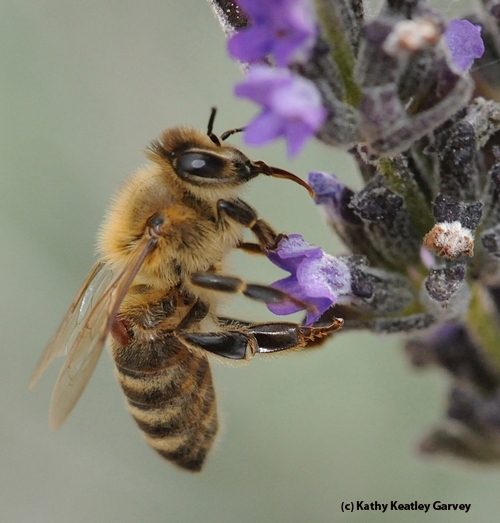
A varroa mite is visible on this forager. (Photo by Kathy Keatley Garvey)
Congratulations, Rei!
Let's hear it for Rei! Margaret “Rei” Scampavia, a doctoral candidate who studies with major professors Neal...
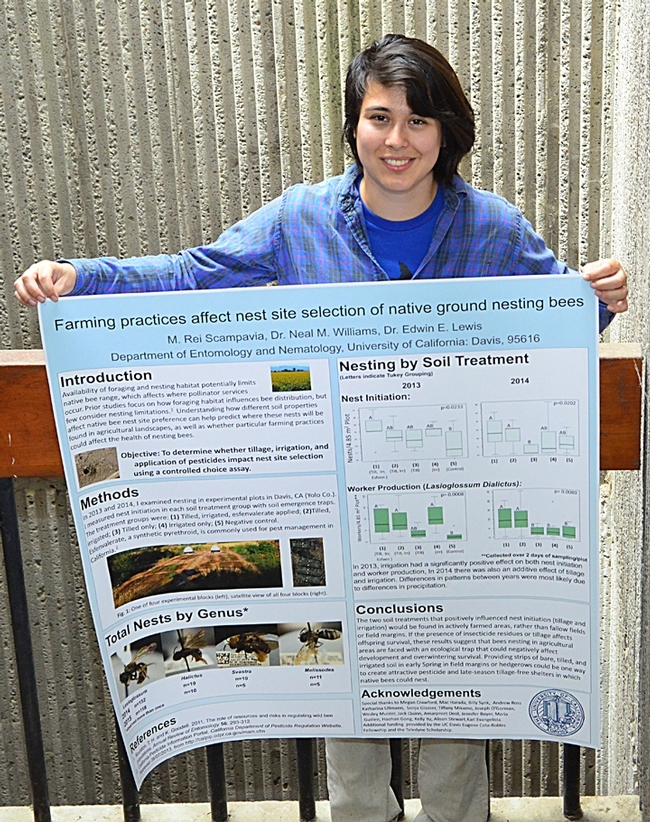
Rei Scampavia with her first-place research poster, “Farming Practices Affect Nest Site Selection of Native Ground Nesting Bees." (Photo by Kathy Keatley Garvey)
High-density planting of avocados boosts yield
The California avocado industry is getting much-needed hope from results of a UC Agriculture and Natural Resources (UC ANR) study on high-density planting, reported Lesley McClurg on Capital Public Radio. One farmer featured in her report said, because of the drought, he is paying $1,600 per acre-foot for water, an all-time high.
Gary Bender, an advisor with UC ANR Cooperative Extension in San Diego County, believes that increasing per-acre yield will help farmers stay in business.
“We've been growing avocados wrong all these years and we're finally starting to figure it out," Bender said.
He planted trees 10 feet apart in a research trial, instead of the standard 20 feet spacing. Instead of letting the trees grow tall, the standard practice, he pruned them regularly to keep the trees short and fat.
The study was a huge success, yielding nearly 13,000 pounds of Haas avocados per acre, McClurg reported. Usually farms in the area yield between 6,000 to 7,000 pounds per acre.
Drought to siphon $2.7 billion from California economy
About 4 percent of the California agricultural economy - $1.8 billion - will be lost in 2015 due to the California drought, and combined with ripple effects in affiliated industries, will produce a $2.7 billion economic hit, reported the San Jose Mercury-News.
The article was based on an economic analysis by a team of scientists that included Daniel Sumner, director of the Agricultural Issues Center, a UC Agriculture and Natural Resources special program.
The downturn will be felt most sharply in the San Joaquin Valley, where five of the state's top six agricultural counties are situated.
"Tulare is taking the hardest hit," said the report's lead author Richard Howitt, a UC Davis professor emeritus of agricultural and resource economics.
Pumping groundwater has hepled keep some acreage in production. This study did not address the long-term costs of groundwater overdraft, such as higher pumping costs and greater water scarcity.
"The socioeconomic impacts of an extended ground (water use), in 2016 and beyond, could be much more severe," said Jay Lund of UC Davis, who lead the analysis.
Pinnipeds, Pollinators and People – We’re all in this Together
Astrid, Pirate, Highway and Toasty are just four of the 120 sea lions and elephant seals currently under care at the Pacific
Marine Mammal Center (PMMC) in Laguna Beach, California. Why are our wild marine mammal friends at PMMC instead of out in the blue Pacific? Wounds, parasites and fishhooks account for some of their issues, but for most of them, malnutrition and dehydration brought them here.The majority of PMMC's patients are pups found stranded on our beaches. According to the National Oceanic and Atmosphere Administration (NOAA), pups are going hungry because unusually warm water along the Pacific coast has made it more difficult for their mothers to find food.
Climate change, drought and pollution are affecting each and every earthly being and so, it is with great commitment, that several UCCE Master Gardeners of Orange County have taken on the task of revitalizing the garden area in and around PMMC.
As supporters visit the Center to learn more about the plight of the marine mammals, they can also learn about native plants, water-wise gardening, beneficial insects and water quality, bringing their experience full circle.
Founded in 1972, the PMMC is nestled at the foot of the Laguna Canyon hills juxtaposed to a waterway that flows directly into the ocean. Mixed in with the sound of barking sea lions, frogs croak. Along the fence leading down to the creek and near brick walkways Master Gardeners have planted more than 50 new plants including Butterfly Cassia, California Fuchsia and White Yarrow, attracting pollinators and using little water.
“It is the perfect place to create a learning environment for the general public,” said Master Gardener and project lead, Ingrid Cebula. “The garden adds value to the entire experience of what each of us can do to help support our precious earth.” Garden plans also include informational signs throughout the landscape and free educational materials at the PMMC gift shop. Master Gardeners can be frequently seen tending to the garden, ready to answer questions.
“While our focus at the center is on marine mammals, we strive to create an awareness of all living creatures and their importance to ourselves and our planet,” said PMMC's Executive Director Keith Matassa. “We are grateful that the Master Gardeners have volunteered their time, expertise and resources to show our visitors even more ‘everyday' ways to keep our ecosystems in balance for all creatures. The garden is a welcome and beautiful addition to PMMC!”
Pacific Marine Mammal Center's mission is to rescue, rehabilitate and release marine mammals and to inspire ocean stewardship through research, education and collaboration.
For more information visit www.pacificmmc.org or contact Ingrid Cebula at idcebula@gmail.com



